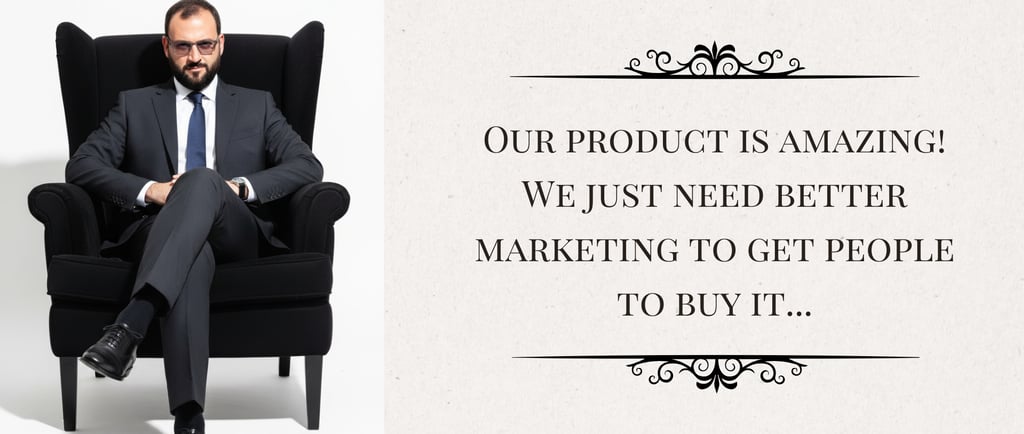Our product is amazing! We just need better marketing to get people to buy it
10/13/20253 min read


You know that line, right? The one that hangs in the air during every failed product/service review?
Our product is amazing! We just need better marketing to get people to buy it.
Oh, man. If I had a dollar for every time I’ve heard that, I could probably buy the company that’s saying it.
Let's imagine this scenario playing out: a firm filled with brilliant engineers, phenomenal craftsmanship. Their premium gadget was technically flawless, a work of luxury art. But sales? Flatline. And guess what the CEO's solution was?
"We need a new agency! Our marketing isn't showing people how great we are!"
That's the moment I realize the real problem isn't the funnel; it's the strategy.
As a strategist—maybe you call it the sigma approach—my first move isn't to look outward at the marketing team. I look inward at the product/service and the founding belief.
The statement itself is a defense mechanism. It's the entrepreneur’s way of saying: "I got the hard part (the creation) right. Someone else is failing at the easy part (the selling)."
But in the premium business world, there is no "easy part."
The Three Strategic Truths They Missed
Here's the hard-boiled reality that needs to be laid out in these situations: In luxury, the product is the marketing. If you have to spend a fortune to convince people your $5,000 watch is worth it, the watch itself failed the first test.
1. The 'Amazing' Delusion (Product-Market Disconnect)
The Flaw: These companies often fall in love with their product, not their customer's pain. The gadget is amazing in a lab test, but in the real world, it only solves a minor annoyance at a premium price point.
The Strategy Fix: Marketing can only amplify a signal. If the product’s inherent value proposition is weak, all the marketing budget in the world is just white noise. The narrative needs to pivot from what the product is (technical features) to what the product does for the customer’s status/life (the true driver of premium purchases).
2. Positioning is the Premium Price Tag's Bodyguard
The Flaw: The firm has a premium price but a mass-market marketing strategy. They are trying to sell a bespoke suit with a "70% off sale!" flyer. They are competing on features when they should be competing on narrative and scarcity.
The Strategy Fix: The solution is not new ads, but new positioning. You have to strategically redefine who this product is not for. That immediately creates the exclusivity and desirability which is the core of luxury marketing. Great marketing doesn't beg; it invites.
3. The Strategy Came Last, Not First
The Flaw: The product was created in a vacuum. Business strategy was never properly integrated with the initial R&D. Marketing was treated like a painter applying a coat of paint after the building was finished, not an architect designing the foundation.
The Strategy Fix: The approach needs to be to rewind. To treat the first six months of the campaign as pure strategy work: mapping the target market's psychographics, and defining the story that the company is going to live by. Once the story is clear and strategic, the marketing often writes itself.
The Takeaway: Stop Blaming the Mirror
To the CEO: "Don't fire the agency. Fire the assumption that your job is over when the product is built."
If you’re struggling to sell your amazing product, the problem isn't marketing. The problem is a strategy gap between your creation and the market's acceptance of its value.
Stop asking: “How can marketing sell this?”
Start asking: “How must this product evolve so that it sells itself?”
That's the difference between a great engineer and a great business strategist. It’s the difference between a loud campaign and a profitable legacy.
